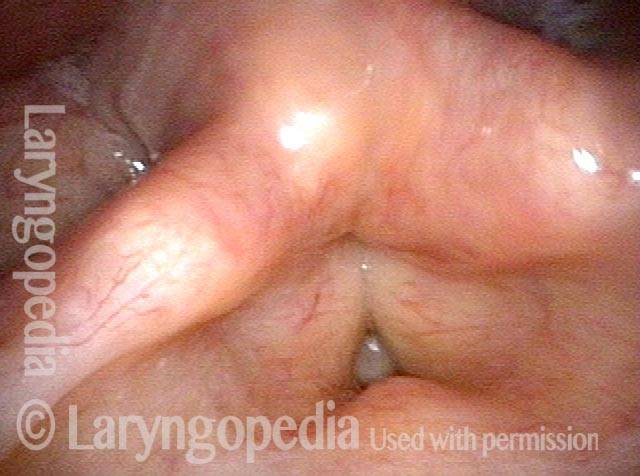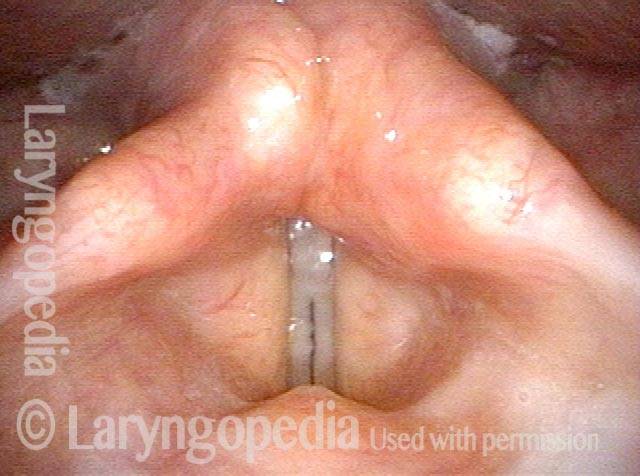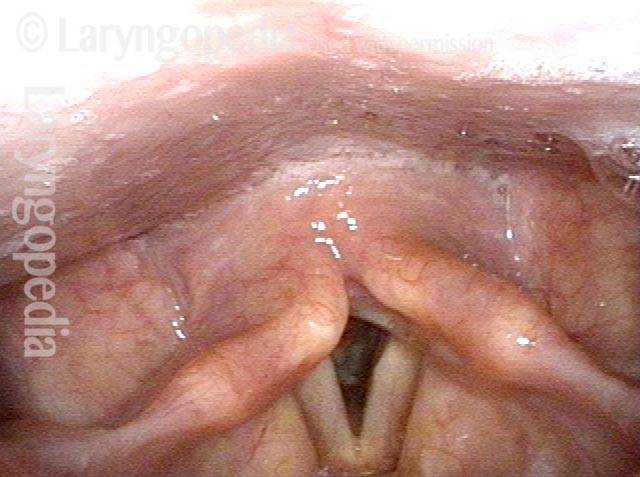Tonic Variant Spasmodic Dysphonia
A variant of spasmodic dysphonia (SD) in which the spasms (and their effect on the voice) are sustained rather than intermittent. Tonic variant spasmodic dysphonia is to be distinguished from classic variant SD.
Individuals with a tonic variant of adductor SD have a sustained strained-sounding voice. Individuals with a tonic variant of abductor SD have a voice that is more or less continuously breathy. Tonic variant SD goes undiagnosed or misdiagnosed far more frequently than does classic variant SD.
“Pure” tonic-variant adductory Spasmodic Dysphonia
Strained and pressed sounding voice (1 of 4)
Strained and pressed sounding voice (1 of 4)
False cords relax (2 of 4)
False cords relax (2 of 4)
Voice quality less strained (3 of 4)
Voice quality less strained (3 of 4)
Adductory tone during breathing (4 of 4)
Adductory tone during breathing (4 of 4)
Four subtypes of adductor SD, tonic variant
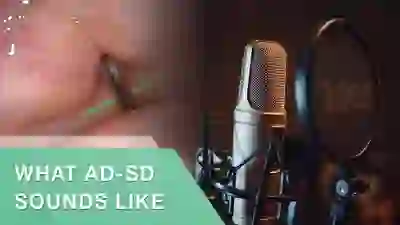
AD-SD | Tonic Variant
Adductory spasmodic dysphonia is a variant of spasmodic dysphonia in which the spasms push the vocal cords together, choking off or straining the voice. There are two variants of adductory spasmodic dysphonia: classic and tonic.
In the tonic variant, the adductory spasms are more constant and sustained than intermittent, so that instead of interrupting the person’s speech, the spasms cause a constant strained or “tight” vocal quality.
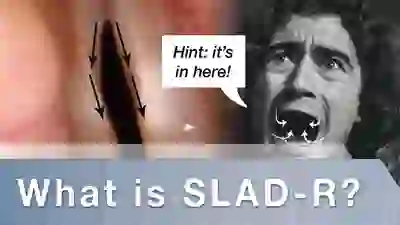
One Man’s Experience Over Time with SLAD-R
SLAD-R is a surgical alternative to ongoing “botox” injections for treatment of adductory spasmodic dysphonia. The surgery involves intentionally cutting the nerves that close the vocal cords for voice and reconnecting a different nearby nerve supply (reinnervating the nerves).
This surgery requires the patient’s willingness to endure an extremely breathy voice for many months after the procedure, while awaiting reinnervation.
